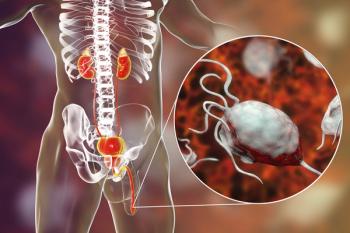
Oncology NEWS International
- Oncology NEWS International Vol 16 No 4
- Volume 16
- Issue 4
PSA-Induced Stage Migration Has Ended
The number of early stage prostate cancers being detected by PSA screening appears to have leveled off; similarly, the gains in cure rates due to early detection may have reached their limit.
ORLANDOThe number of early stage prostate cancers being detected by PSA screening appears to have leveled off; similarly, the gains in cure rates due to early detection may have reached their limit. "It is still crucial for men to have their PSA levels tested, but the days of improved cure rates because of increased detection of organ-confined disease have ended," senior investigator Eric A. Klein, MD, said at ASCO's 2007 Prostate Cancer Symposium (abstract 30). Dr. Klein, professor of surgery and head of urologic oncology, Glickman Urological Institute, Cleveland Clinic Foundation, presented the poster for lead investigator Fei Dong, a second-year medical student at Case Western Reserve University.
"When PSA testing was first introduced in 1987," Dr. Klein said, "most prostate cancers didn't seem to be curable even though the men were treated with radiation and surgery. After 10 years of PSA screening, we were curing more men, but it wasn't because we were doing better surgery or radiation. It was because newly diagnosed prostate cancer was being picked up at a curable stage, and that is what has fueled the increase in cure rates, to about 95%."
The investigators analyzed the surgical pathology of 3,364 patients treated consecutively at the Cleveland Clinic from 1987 to 2005 for extraprostatic extension (EPE), organ-confined disease, and clinically insignificant disease. They also examined 2,256 specimens removed between 1999 and 2005 for clinically insignificant disease, which they defined as tumors less than 0.5 cc, surgical Gleason grade 6 or less, and no EPE.
From 1987 to 2005, pathologic staging showed a decreasing trend for EPE and an increasing trend for organ-confined disease. The percentage of tumors with EPE decreased from 79% to 25% (P <.0001), while organ-confined disease increased from 21% to 75% (P < .0001). However, this positive trend stabilized between 1998 and 2005. In that period, the percentage of organ-confined tumors fluctuated between 63% and 75%, while the proportion of prostate tumors with EPE ranged from 25% to 36%.
The findings suggest that the reservoir of undetected prostate cancers may be depleting and that the current rate of detection may more accurately reflect the true incidence of disease, Dr. Klein said.
"PSA-induced clinical and pathological stage migration appears to have plateaued about 8 years ago," he commented. "It hasn't completely flattened out, but it has slowed substantially. This means that improved rates of cure because of an increase in the likelihood of having organ-confined disease has ended. We're not going to see gains in cure rates beyond what we've already achieved simply based on PSA screening. Increments in cure to 100% will require true, new therapeutic advances both in surgery and radiation therapy."
Articles in this issue
over 18 years ago
Curcumin Evaluated for the Treatment of Pancreatic Cancerover 18 years ago
Tykerb Approved for Metastatic HER2+ Breast Cancerover 18 years ago
Drug for BPH May Also Reduce the Risk of Prostate Cancerover 18 years ago
Phase III Trial of Prostvac-VF Is Launchedover 18 years ago
Electronic System Reminds Patients to Schedule Examsover 18 years ago
Phase II Trial of Panzem for Renal Cell Carcinoma Initiatedover 18 years ago
Chemotherapy May Enrich Tumorigenic Cells in Breast Caover 18 years ago
Watchful Waiting Management for Prostate Ca a Hard SellNewsletter
Stay up to date on recent advances in the multidisciplinary approach to cancer.

















































































